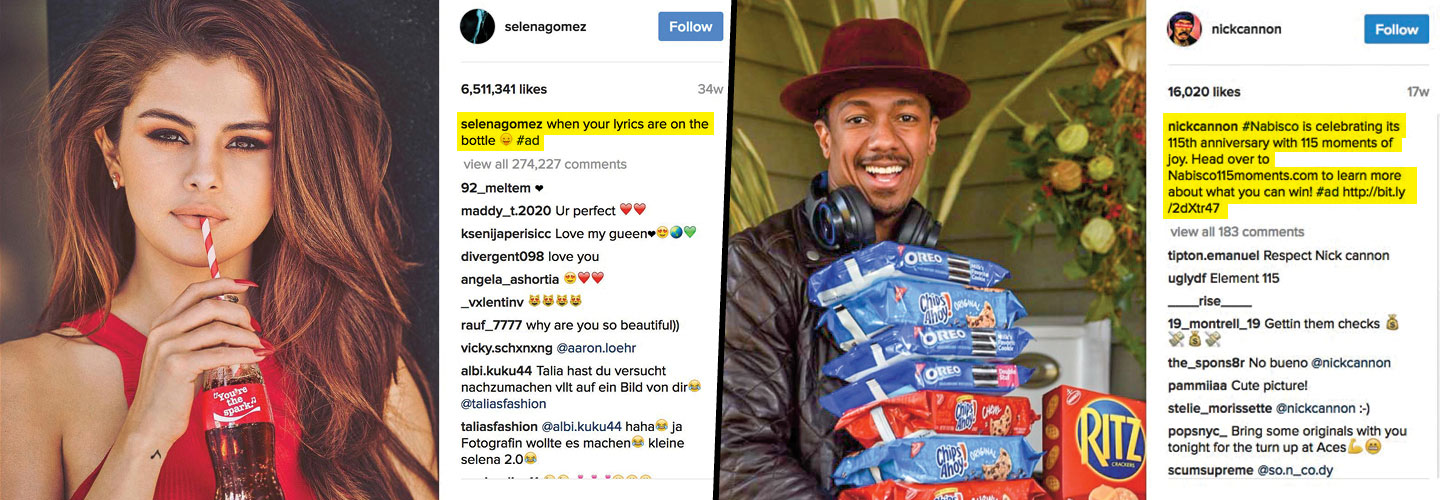Last June, Selena Gomez posted a photo of herself drinking a Coke on Instagram. Visible on the soda’s label is “You’re the spark”—words from her 2015 song “Me & the Rhythm.” Gomez had added a caption: “When your lyrics are on the bottle.”
The photo became one of the most popular images in Instagram’s history, getting millions of likes. But unlike some of the other photos Gomez posts, this was a paid ad.
That Instagram post spurred consumer advocates to take action. TruthInAdvertising.org (TINA), a nonprofit that monitors deceptive advertising, sent Coca-Cola a letter asking why the post hadn’t been labeled as an ad. After TINA’s complaint, the singer added the hashtag #ad to the post, which remains on her Instagram feed.
Product placement on social media is a new type of celebrity endorsement. Because it can easily fool the public into viewing an unidentified ad, it raises issues that federal regulators are struggling to address. “If an individual has a material connection with the company, they are required [by law] to disclose that,” says Bonnie Patten of TINA. “It has to be clear if the content is advertising.”
But part of the problem is that long-standing rules designed to regulate ads on TV and radio are tough to enforce in today’s digital world.
Last June, Selena Gomez posted a photo of herself drinking a Coke on Instagram. Visible on the soda’s label is “You’re the spark.” Those words are from her 2015 song “Me & the Rhythm.” Gomez had added a caption to the photo. It said: “When your lyrics are on the bottle.”
The photo became one of the most popular images in Instagram’s history. It got millions of likes. But unlike some of the other photos Gomez posts, this was a paid ad.
That Instagram post spurred consumer advocates to take action. TruthInAdvertising.org (TINA) is a nonprofit that monitors deceptive advertising. It sent Coca-Cola a letter asking why the post hadn’t been labeled as an ad. After TINA’s complaint, the singer added the hashtag #ad to the post. The photo remains on her Instagram feed.
Product placement on social media is a new type of celebrity endorsement. It can easily fool the public into viewing an unidentified ad. This form of product placement raises issues that federal regulators are struggling to address. “If an individual has a material connection with the company, they are required [by law] to disclose that,” says Bonnie Patten of TINA. “It has to be clear if the content is advertising.”
But part of the problem is that long-standing rules designed to regulate ads on TV and radio are tough to enforce in today’s digital world.



